There are many countries that may seem to rank above Germany when it comes to opportunities for “adventure eating,” but if you define being an intrepid foodie as stuffing your face with food you’ve never heard of and can’t pronounce correctly, we present leberknödelsuppe. Bavaria, the German state encompassing Munich and bordering both the Czech Republic and Austria, is worthy of an extended gastronomic detour. In addition to sausages, sauerkraut, and giant soft pretzels, this southern region is also the country’s culinary heartland. Here are seven traditional dishes you should experience while visiting Bavaria.
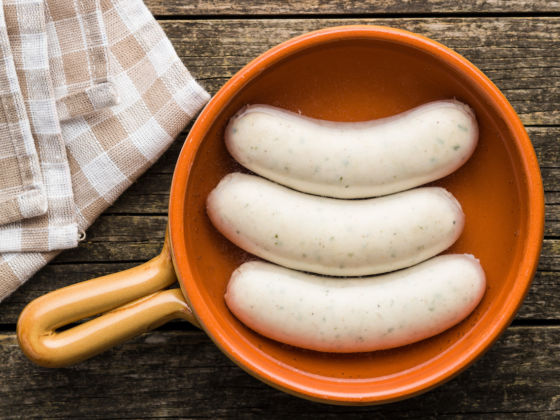

1. Weisswurst
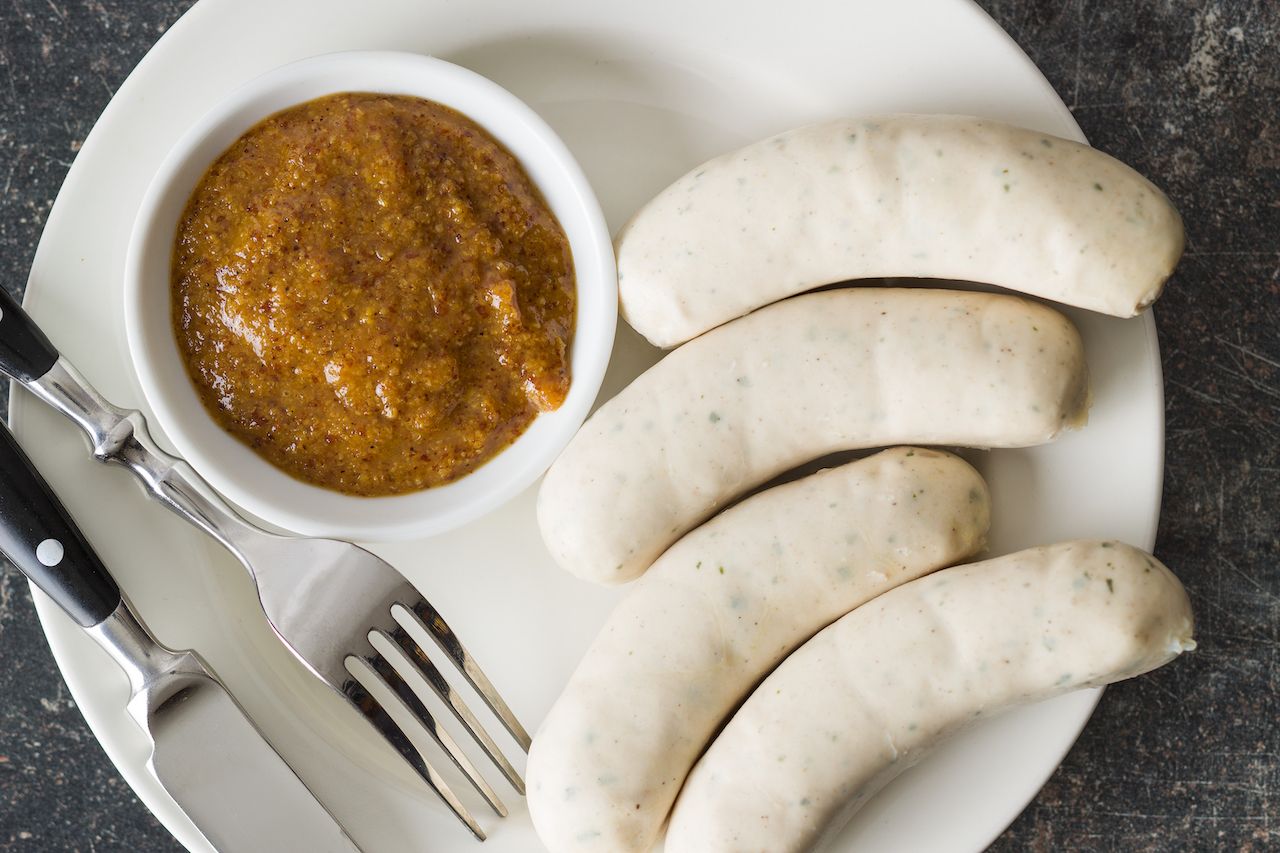
Photo: Jiri Hera/Shutterstock
Bavarians love their sausages, and weisswurst is no exception. These savory veal-and-pork links have a distinctive white color and flavors of parsley and onion not found in other German sausages. They also have a less meaty aftertaste, making a weisswurst paired with a citrusy weissbier particularly delightful. Although weisswurst is a mainstay at local farmers markets, it also takes top billing in the weisswurst fruhstuck, a rousing breakfast served in both Bavarian homes and taverns.
Where to find it: Zum Spöckmeier in downtown Munich for melt-in-your-mouth weisswurst with soft pretzels and sweet mustard.
2. Bretzl
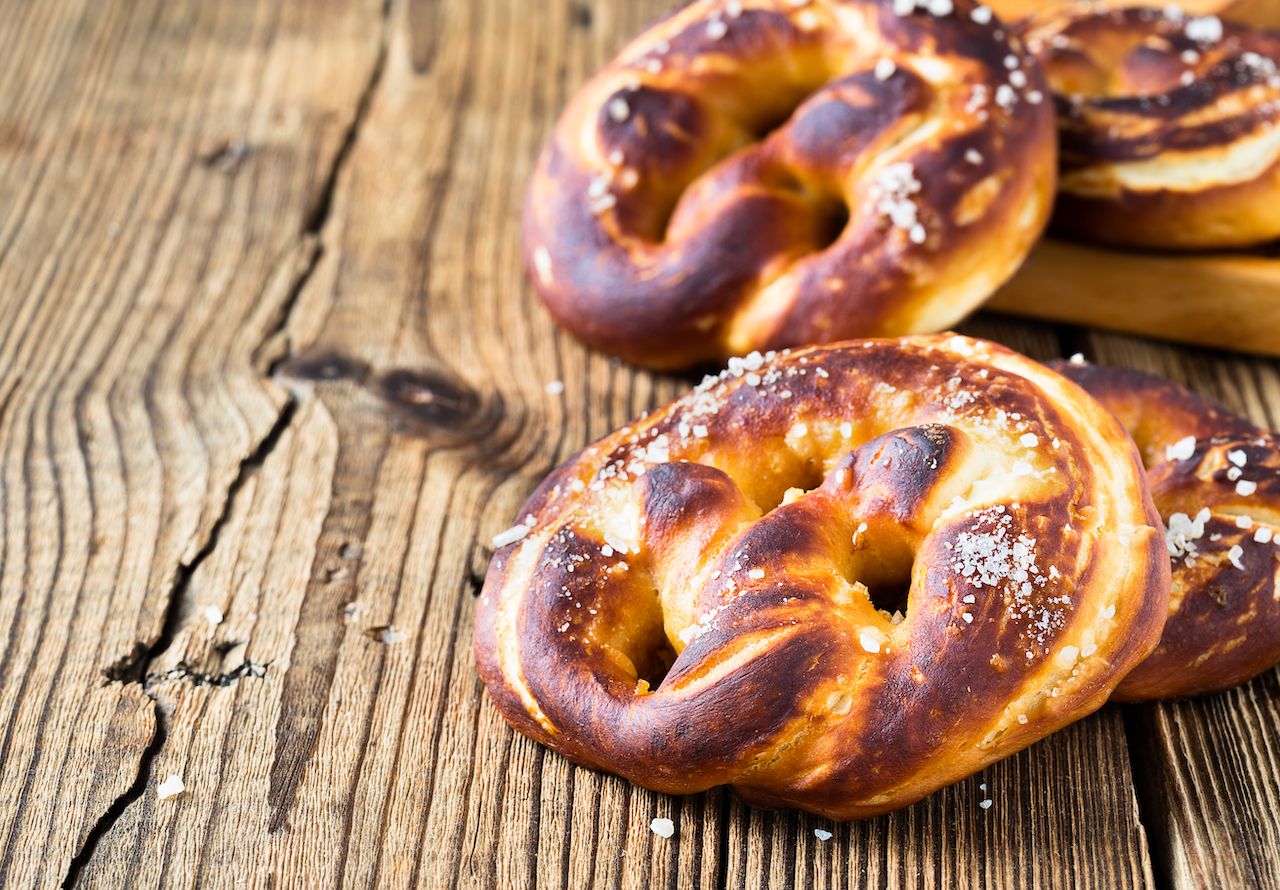
Photo: istetiana/Shutterstock
Though their exact origins are shrouded in mystery, traditional soft pretzels — locally referred to as bretzls — are ubiquitous in Munich and across all of Bavaria. A bretzl is not just a pretzel. It’s durable, able to accompany added ingredients and letting them accentuate — but never overtake — the doughy epicness that hooked us to them in the first place. It’s kind of like the pizza of pretzels in that way. You will find these twisted breads everywhere in Bavaria, from bakeries and beer halls to parks and street carts.
Where to find it: If you find yourself leisurely strolling through the Viktualienmarkt in Munich’s Old Town, stop by Karnoll’s for a classic bretzl and freshly brewed coffee. If that’s not enough to tickle your fancy, though, visit one of the city’s many Wimmer bakery-cafes for butter-glazed and cheese-filled pretzels.
3. Obatzda
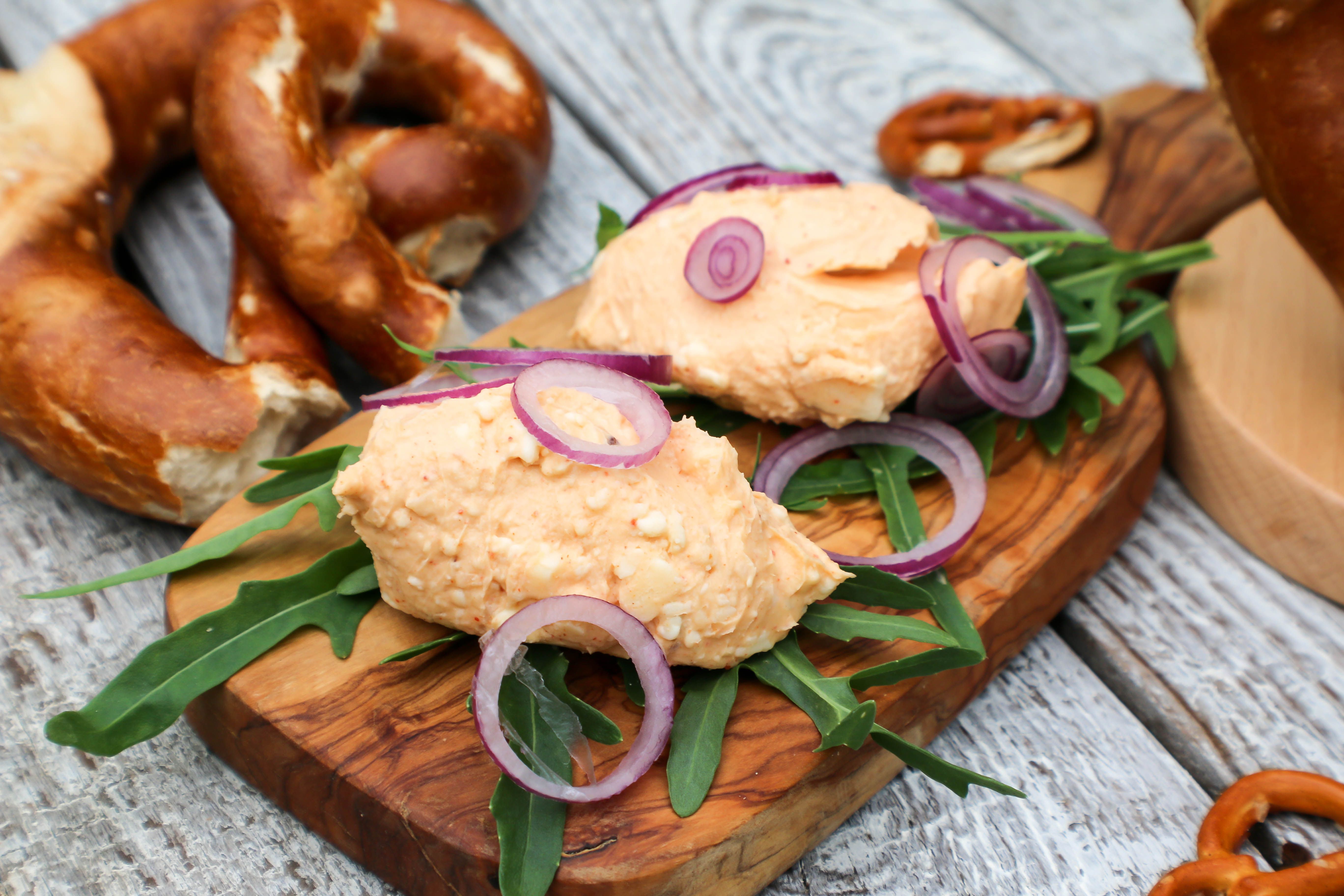
Photo: Foxxy63/Shutterstock
Even though Bavarian pretzels are delicious on their own, you will often find them served with a side of obatzda. This savory spread blends two parts soft cheese, often Camembert, with one part butter and sometimes onions for an added kick. Additionally, depending on where you are in the region, you might encounter obatzda with some locally brewed ale, lager, or pilsner mixed right in. Remember though, this is the home of Oktoberfest, so don’t ever let a spoon of beer in a recipe deter you from ordering a glass on the side.
Where to find it: Der Pschorr in Munich’s busy Viktualienmarkt dishes up a variety of Bavarian classics, but definitely make room for its obatzda with onions and chive bread.
4. Käsespätzle
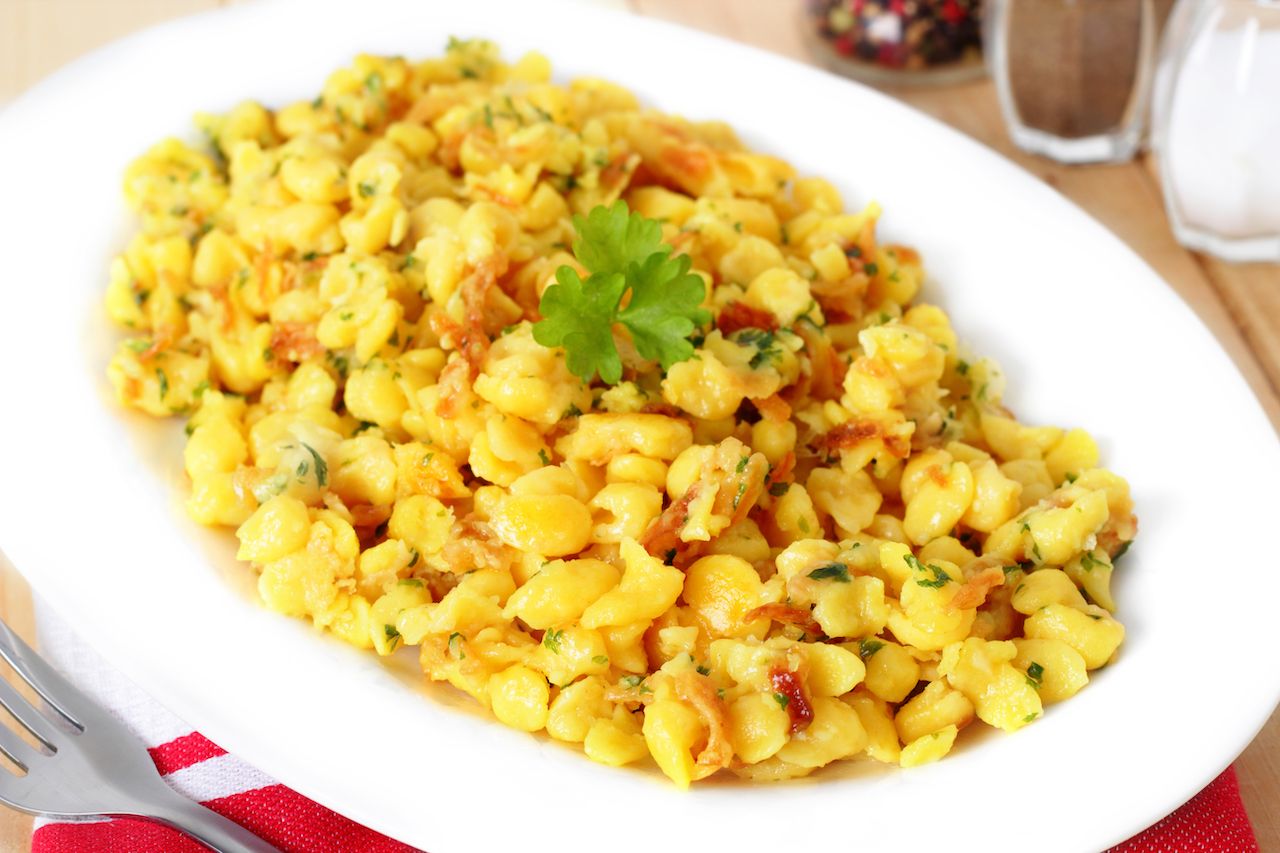
Photo: Martin Rettenberge/Shutterstock
If you are a mac and cheese aficionado, then käsespätzle is right up your alley. This distinctly Bavarian spin on the iconic comfort food was born when local cooks added melted cheese to their traditional spaetzle, and as melted cheese tends to do, the result took the humble egg noodles to a whole new level. The name — spätzle with cheese — is as straightforward as the dish, and it’s now popular across the region and can be found in western Austria, Liechtenstein, and Switzerland — coincidentally all spots that love their cheese.
Where to find it: Käsespätzle is served all over Bavaria, but the emmentaler- and mountain-cheese-topped spaetzle at Augustiner Klosterwirt in Munich should be your first port of call. Klosterwirt also offers a variety of local brews on tap.
5. Bavarian sauerkraut

Photo: yingko/Shutterstock
Though sauerkraut is a global superstar of side dishes and a favorite hot dog topping back in the United States, it has not forgotten its German roots. As with käsespätzle, the Bavarian version of sauerkraut, known as blaukraut, is a ramped-up version of what most typically associate the dish as being — fermented cabbage. While in most sauerkraut recipes the cabbage has few if any accompaniments, crafty Bavarians made this simple side dish even more flavorful by adding onions, pork fat, and even some grated apple for a bit of sweetness. Blaukraut is served as a side with more complex meat courses, though you can always do it old school and just toss some blaukraut on top of a sausage. It’s a Bavarian experience either way.
Where to find it: Try it alongside a few brats and a tall stein of your favorite beer at the iconic Hofbräuhaus, or even by itself if you so desire.
6. Leberknödelsuppe

Photo: Eder/Shutterstock
Liver has been a popular dish in Bavarian households for generations, and whether visitors (from both around Germany and abroad) love it or hate it, traditional recipes built around liver are only gaining popularity in the region. Among the most traditional methods for serving this often-reviled organ meat is to cook it into a hearty soup called leberknödelsuppe. Made with a savory blend of liver and flour, the dumplings — or knodel — are served in a clear broth but vary quite significantly in shape and size. For instance, you might find spaetzle-shaped knodel at one restaurant and ball-shaped ones at the next.
Where to find it: Head to Munich’s Old Town and grab a seat at Haxnbauer, a restaurant and brewpub.
7. Kaiserschmarrn

Photo: A_Lein/Shutterstock
Venture into the Bavarian Alps and you’ll find a plethora of local bakeries and restaurants serving kaiserschmarrn, a primary way for Bavarians to satisfy their sweet tooth. Scrambled until it is lightly caramelized, this golden-brown Alpine dessert pancake is rich in either apple, cherry, or almond puree, depending on whichever local fruits and nuts are in season.
Where to find it: Even though you will encounter kaiserschmarrn in eateries throughout the Alps, stop by the Berggasthof Neureuth beer hall near Tegernsee for this tasty treat. It’s the perfect way to indulge after a long day of strenuous hiking or even simply admiring the idyllic mountain scenery.